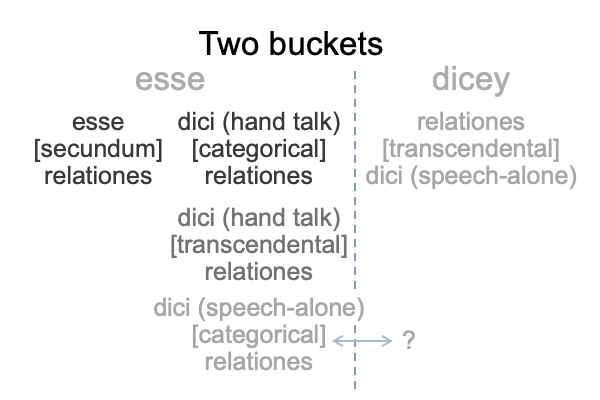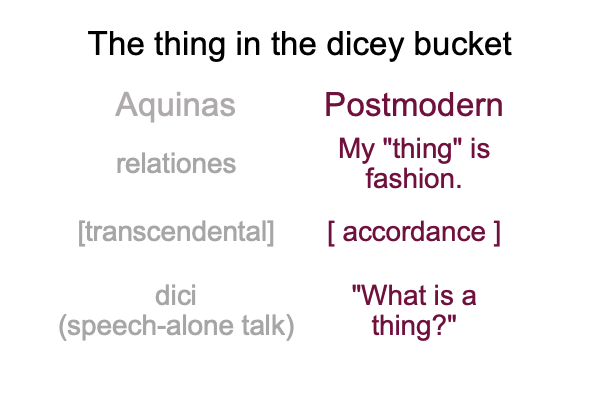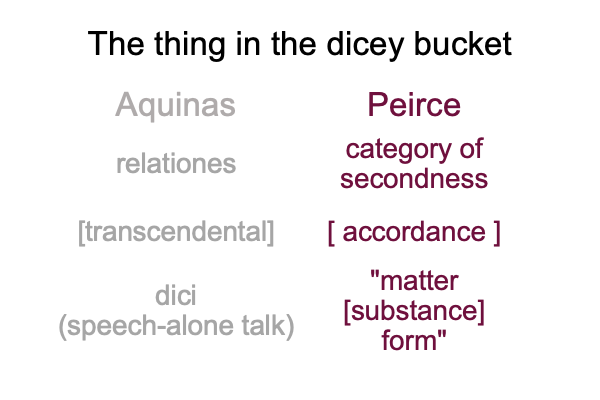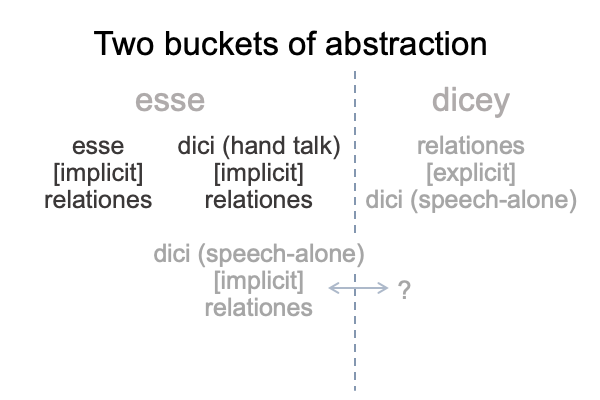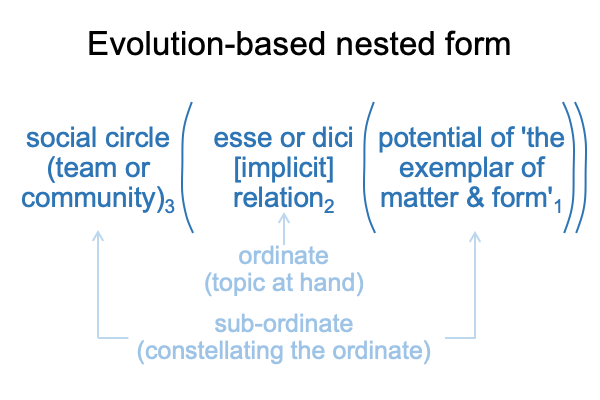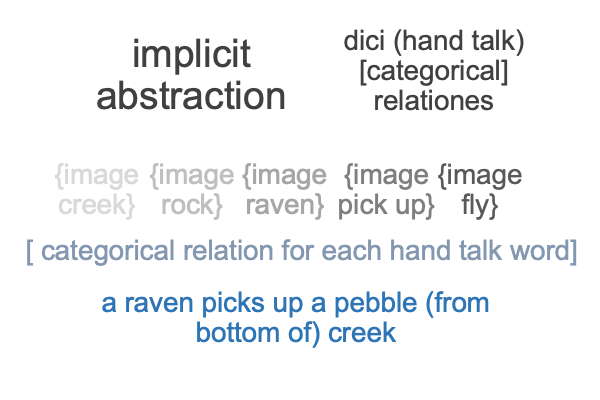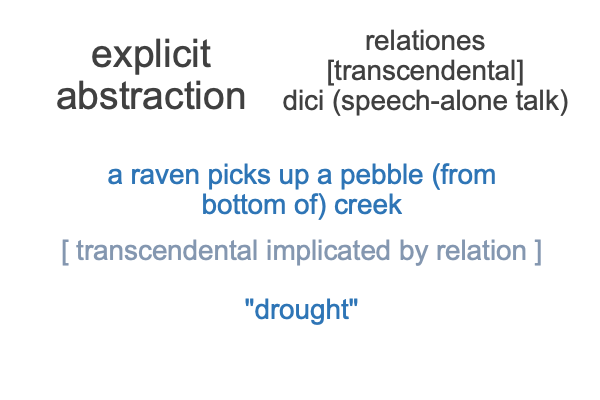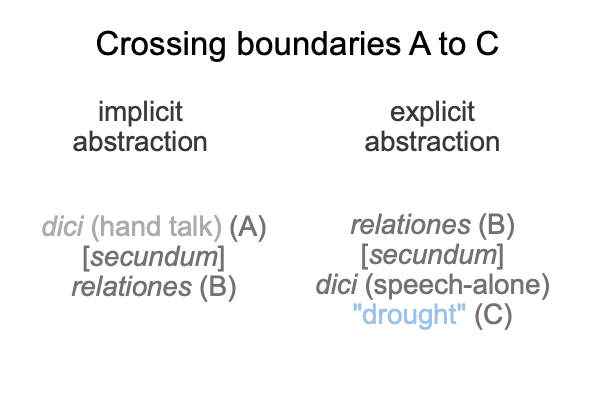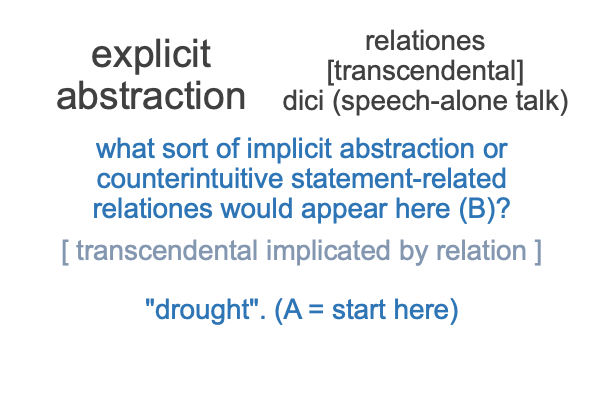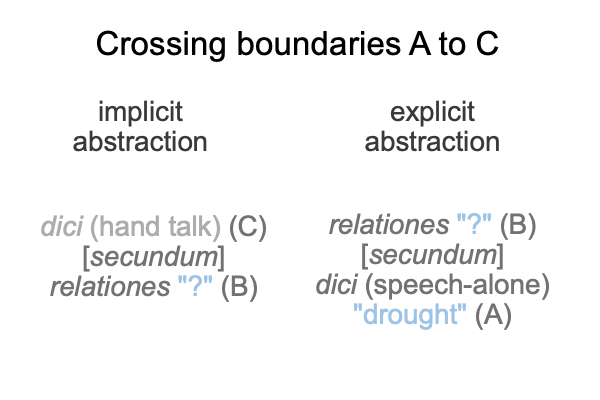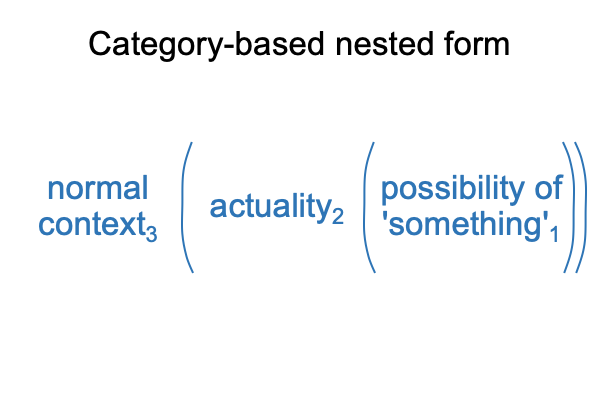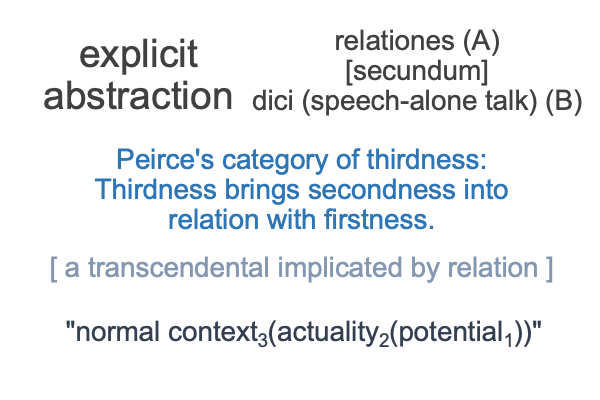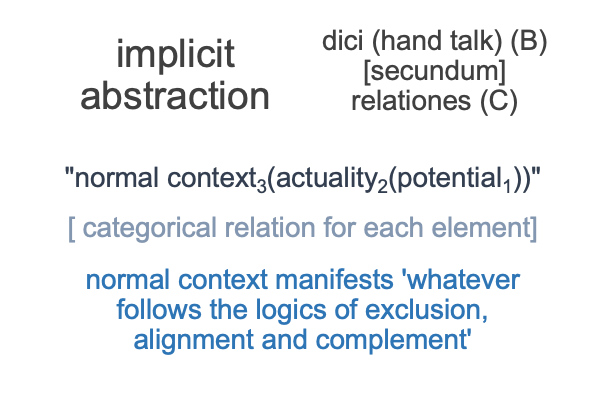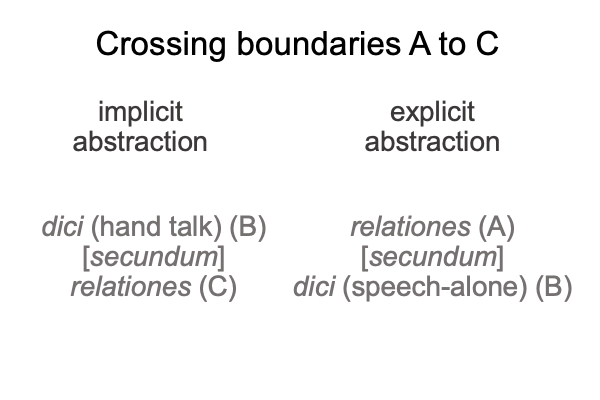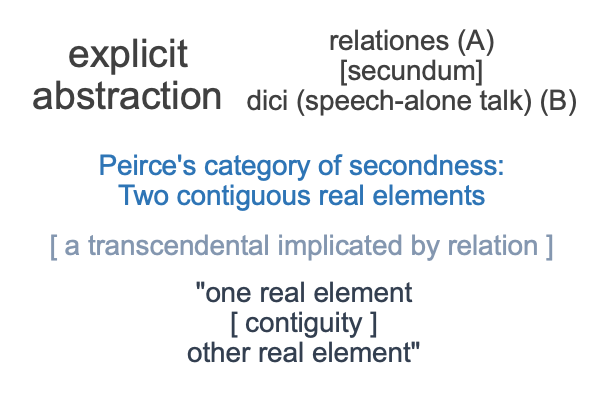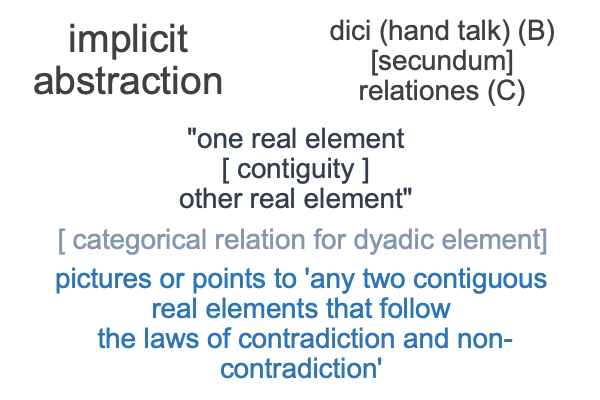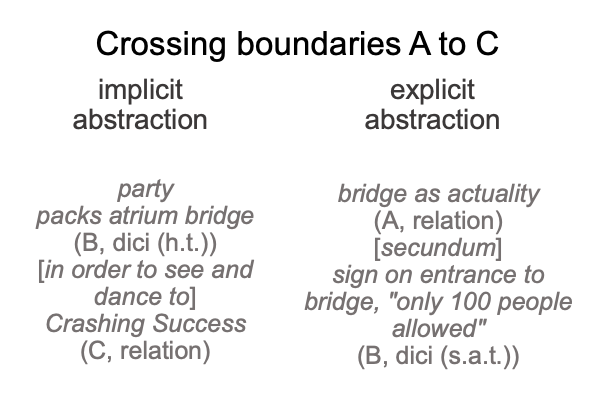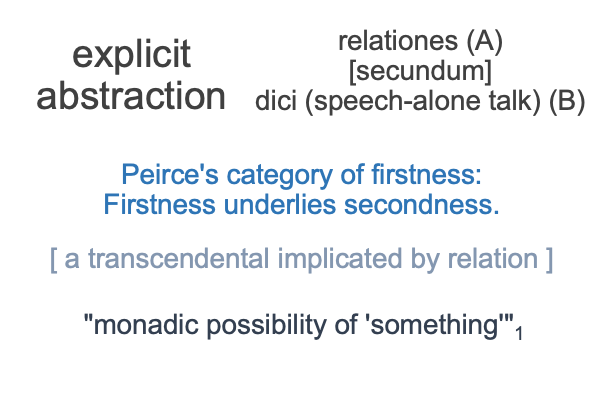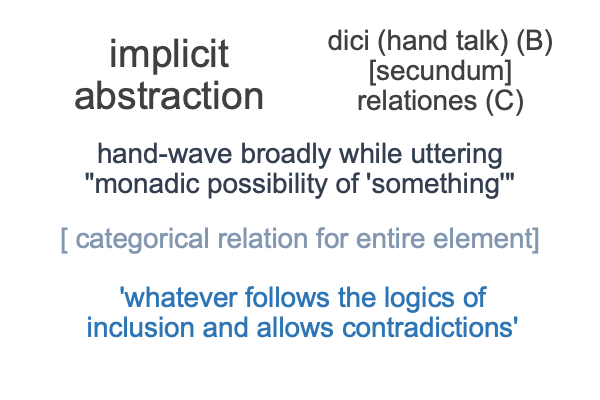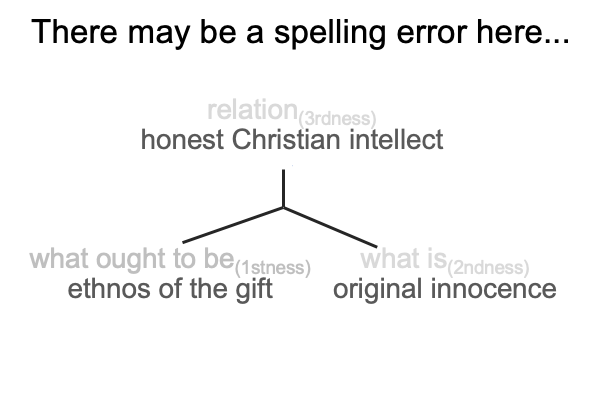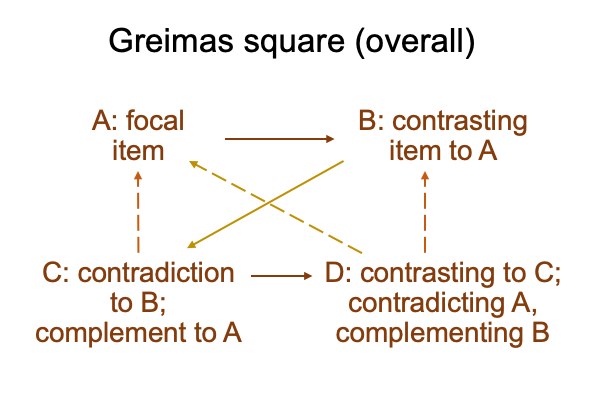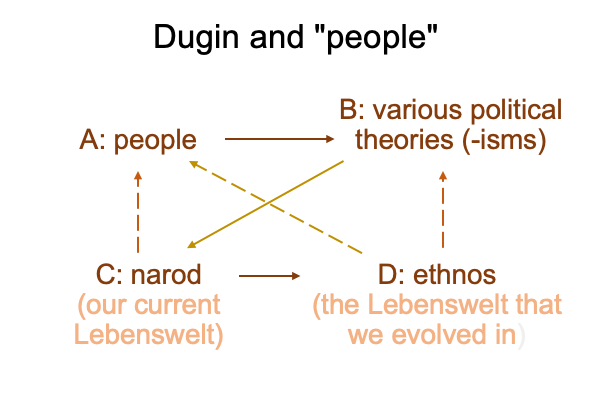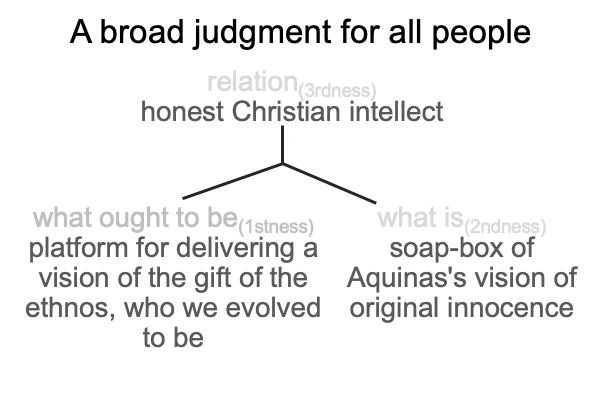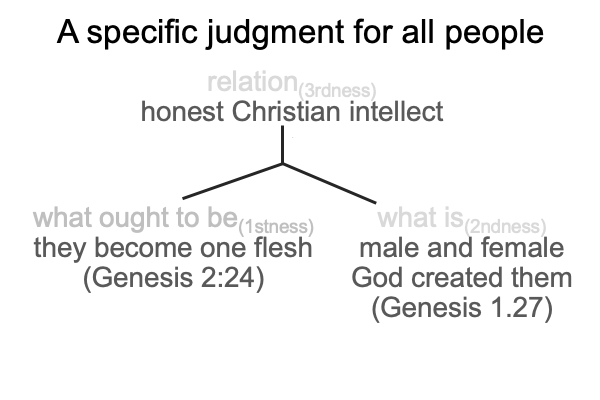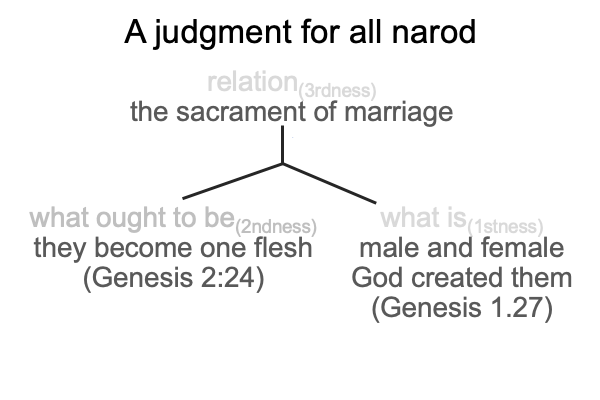Looking at Tomasz Duma’s Article (2023) “The Specificity of Secundum Dici Relations…” (Part 8 of 14)
0070 Here is the list for human evolution starting with the earliest appearance of anatomically modern humans in the fossil record, over 200,000 years ago. From its inception, Homo sapiens practices hand-speech talk. The hand-talk component remains iconic and indexal. The speech-talk component serves as a symbolic adornment, at first, then takes on a life of its own. At the time of the first singularity, hand-speech talking cultures intentionally abandon the hand-talk component of their hand-speech talk, in imitation of speech-alone talking cultures.
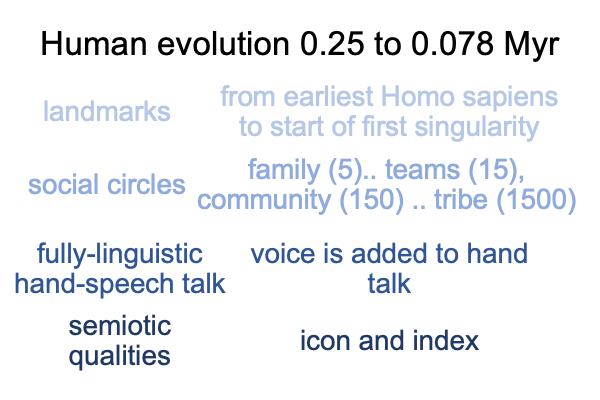
0071 Say again?
Speech is an exaptation following an adaptation to singing. As larger and larger social circles become typical after the domestication of fire, singing is used to synchronize hominins at the start of seasonal get-togethers of mega-bands and occasional gatherings of the tribe. Then, singing is further enhanced through sexual selection. Over generations, the vocal tract comes under voluntary neural control. Then, the exaptation of speech for use with hand talk occurs at the start of our own species, Homo sapiens.
0072 Hand-speech talk is fully linguistic.
Since speech cannot image or point to its referent, the semiotic qualities of hand-speech talk maintain continuity with hand-talk.
Consequently, hand-speech talk facilitates only implicit abstraction.
0073 Then what happens?
Around 7800 years ago, the Ubaid of southern Mesopotamia is clearly evident along the edge of the Persian Gulf, after the Gulf has filled due to rising ocean levels. According to the e-book, The First Singularity and Its Fairy Tale Trace (by Razie Mah, available at smashwords and other e-book venues), the Ubaid emerges as a speech-alone talking culture. At the time of the Ubaid’s inception, all other Neolithic, Mesolithic and Epipaleolithic cultures practice hand-speech talk.
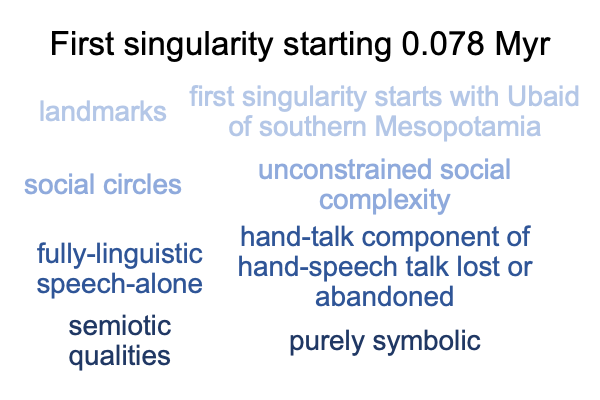
0074 Speech-alone cannot picture or point to its referents. So, the only way that one knows what a spoken word refers tois through habit and convention. Speech-alone talk is purely symbolic. Spoken words can be used to label parts of a whole, how the parts operate within the whole, as well as the whole. Such specificity is called “explicit abstraction”. Explicit abstraction promotes both labor (wealth) and social (power) specializations. Realizing such specializationsentails a historical process and yields higher and higher levels of social complexity (wealth and power).
Well, at least until a social collapse occurs.
0075 Indeed, the Ubaid starts with more labor and social specialization than surrounding hand-speech talking cultures. Why? First and foremost, it practices speech-alone talk from the start. Speech-alone talk facilitates explicit abstraction. Explicit abstraction encourages labor and social specializations. Second, the Ubaid is a fusion of land-loving Neolithic and marsh-dwelling Mesolithic cultures. Two complementary styles of production spur economic activities. Third, the low cost of transportation on waterways favors trade.
Some archaeologists suggest that the second and third points are sufficient to explain why the Ubaid is the earliest culture to trend towards unconstrained social complexity. But, I don’t think the claim is sufficient. The difference in the semiotic qualities between hand-speech talk and speech-alone talk provides a more adequate explanation for why southern Mesopotamian cultures spiral towards higher and higher levels of social complexity, eventually reaching the Sumerian Dynastic Period, 2800 years after the nominal start of the Ubaid.
A new timeline can be constructed, starting with definitive archaeological evidence of the Ubaid. Years are denominated as U0′ (Ubaid Zero Prime). This year is 7824 U0′.
0076 For the purposes of this examination of Duma’s article, I can imagine comparing implicit and explicit abstraction in regards to a classic example of a relationes secundum dici, the relation between a thing and an accident of the thing.
0077 My example consists of the hand of my friend, where the tip of his middle finger has been bitten off by a dog… er… little wolf. Indeed, the accident occurs so long ago, that his name is [WOLF][FINGER].
0078 To start, my friend and I live in a hand-speech talking culture just north of the Ubaid. So, we practice hand-speech talk, even though we have been visited by Ubaid missionaries.
My friend’s hand-talk name precisely captures both the thing (my friend) and the absence of the tip of the finger (accident of his hand).
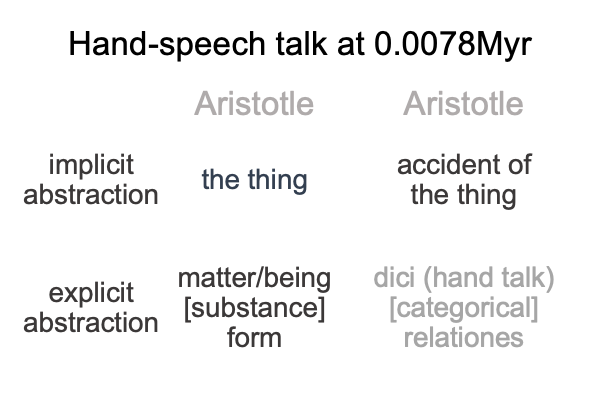
0079 If an Aristotelian formulates a hylomorphe for my friend, the classic hylomorphe works fine. Then, for the missing tip of his middle finger, Aquinas’s use of relationes secundum dici will do. The dici (hand talk) relation coheres withrelationes secundum esse. For this reason, I replace [secundum] with the word, “categorical”, where “categorical” implies a relation with one terminus in ens reale, where the mind-independent being is the gesture-word’s referent.
Dici (hand talk) associates to matter and relationes associates to a lack of complete form.
0080 Later, my friend and I live is the same culture that has dropped the hand-talk component of hand-speech talk. We now practice speech-alone talk.
If an Aristotelian formulates a hylomorphe for my friend, the classical hylomorphe works fine. Then, for the missing finger tip, the relation associates to matter and the spoken words, “A dog bit off his finger.” associates to form.
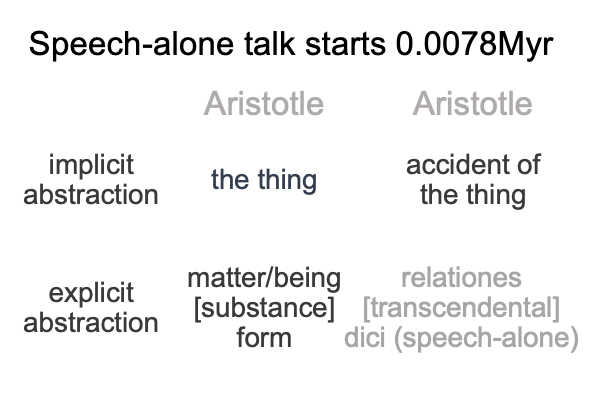
0081 I suppose that distinction between “categorical” and “transcendental” does not seem to be decisive when it comes to relationes secundum X.
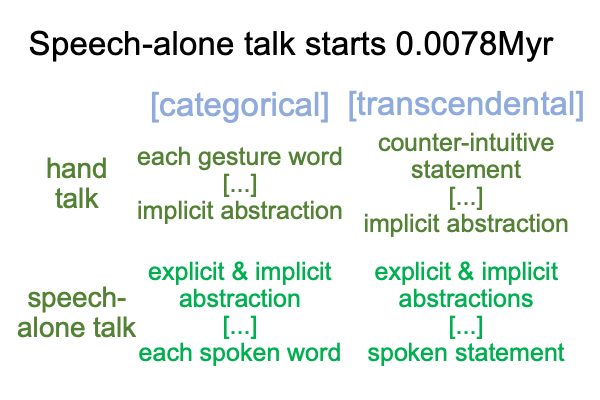
At the same time, it is relevant, because the “referent” for a word and a statement differ.

